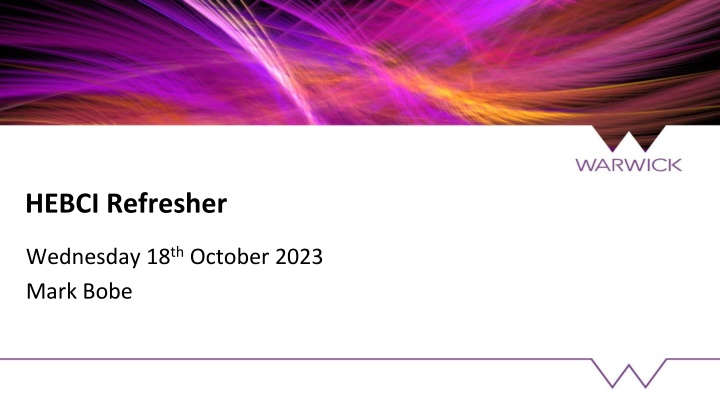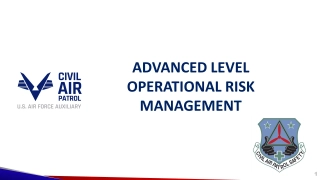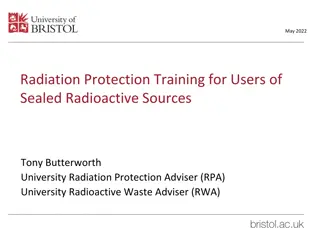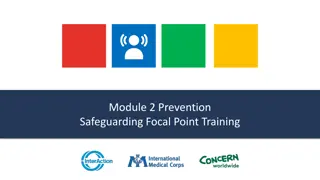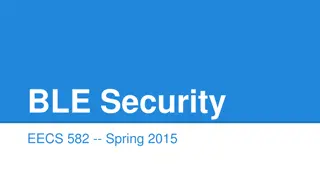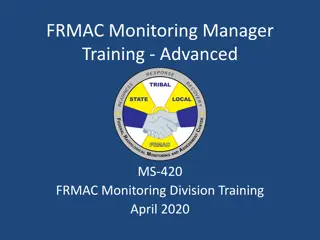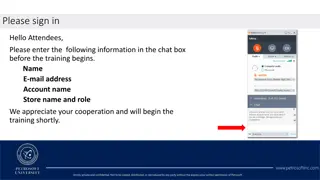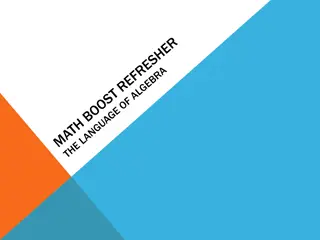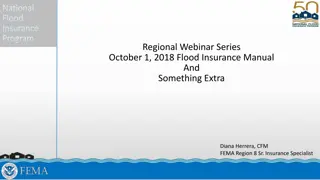HEBCI Refresher
The Higher Education-Business and Community Interaction (HE-BCI) survey aims to provide data on the ongoing collaboration between higher education providers and businesses/community, support public funding for knowledge exchange activities, offer benchmarking information, and inform funding decisions. The survey collects information to drive policy development, allocate public funding, and enhance infrastructure for knowledge exchange in UK higher education.
Download Presentation

Please find below an Image/Link to download the presentation.
The content on the website is provided AS IS for your information and personal use only. It may not be sold, licensed, or shared on other websites without obtaining consent from the author.If you encounter any issues during the download, it is possible that the publisher has removed the file from their server.
You are allowed to download the files provided on this website for personal or commercial use, subject to the condition that they are used lawfully. All files are the property of their respective owners.
The content on the website is provided AS IS for your information and personal use only. It may not be sold, licensed, or shared on other websites without obtaining consent from the author.
E N D
Presentation Transcript
HEBCI Refresher Wednesday 18thOctober 2023 Mark Bobe
Purpose of the Higher Education-Business and Community Interaction Survey To provide data on the continuing development of interaction between higher education providers (HEPs) and business and the wider community To provide reliable and relevant information to support the continued public funding of knowledge exchange (KE) activity in the UK To give HEPs good benchmarking and management information To develop a source of indicators at the level of the individual HEP, some of which can be used to inform funding bodies allocations of continued funding To gain a UK-wide perspective in knowledge exchange and to highlight any significant differences across the four UK nations.
Reasons to collect HE-BCI data To assist in the production of knowledge exchange activity information. To assist in the production of management information. To support policy development. To provide metrics to drive the allocation of public To further develop HEPs' infrastructure in this area.
Statutory requirements The HE-BCI record is collected in line with statutory requirements from all HE providers in Wales, Scotland and Northern Ireland, and in line with statutory requirements from all approved (fee cap) providers in England. The HE-BCI record covers a range of activities: from the commercialisation of new knowledge, through to the delivery of professional training, consultancy and services, to activities intended to have direct social benefits. Business' in this context refers to both public and private sector partners of all sizes and sectors, with which HEPs have interactions. The HE-BCI record is seeking to collect interactions between UK HEPs and businesses and the wider community. This excludes interactions between a UK HEP and their constituent parts, colleges or corporate group, or with another UK HEP, regardless of whether in the UK or overseas.
Small and medium-sized enterprise employ fewer than 250 employees worldwide (including partners and executive directors), and has either an annual turnover not exceeding 50m euros, or an annual balance sheet total not exceeding 43m euros, and conforms to the following independence criteria: An enterprise is considered independent unless 25% or more of the capital or of the voting rights is owned by an enterprise falling outside the definition of an SME whichever may apply, or jointly by several such enterprises. (This ceiling may be exceeded if the enterprise is held by public investment corporations, venture capital companies or institutional investors, provided no control is exercised either individually or jointly, or if the capital is spread in such a way that it is not possible to determine by whom it is held).
Research For the purposes of the HE-BCI, research is defined as original investigation undertaken in order to gain knowledge and understanding'. This definition excludes routine testing and analysis and the development of teaching materials that do not embody original research.
Contract Research This includes contract numbers and income identifiable by the HE provider as meeting the specific research needs of external partners. You should exclude both any income already returned in collaborative research involving public funding and basic research council grants. Contract research income from charities may be included where the charity is contracting research for its own purposes. Income must align with the accounting policies adopted by the provider. So, in the year when the financial accounts recorded that your provider received the income, it should be returned in the corresponding HE-BCI submission.
Collaborative research involving public funding This includes research projects with public funding from at least one public body, and a material contribution from at least one external non-academic collaborator. The collaborative contribution may be cash or 'in kind' if this is specified in a collaborative agreement and auditable. In-kind contributions include contributions to the project from the non-academic collaborators (for example staff time, use of equipment and other resources, materials, provision of data etc.) as described in the project collaboration agreement. Please note: Where a consortium of providers are receiving a benefit from in-kind contributions that are shared between multiple HEPs in the UK and overseas, it should be shared across all partners irrelevant of location so that the UK partners are showing a truer share.
Collaborative Research Collaborative research involving public funding is analysed as follows: UKRI Research Councils, Royal Society & British Academy includes income from all collaborative research from research councils covered by the UK Research and Innovation as well as funding from cross UKRI programmes such as the Strength in Places Fund (SIPF) or similar cross UKRI funding that meets the requirements for collaborative research.
Collaborative Research (2) Other UK Government departments includes income from all government departments and Innovate UK (including income from Knowledge Transfer Partnerships (KTPs)) should be included under this sub-head. EU Government includes all research income from all government bodies operating in the EU, which includes the European Commission but excludes bodies in the UK. Other includes charities, public and not-for-profit organisations as well as commercial businesses. This Sub-head can include non-EU funding and charities who are not registered in the UK.
Worked Example 1 Ref. No: 76340 Department: Institute for Employment Research PI: Jeisson CardenasRubio Title: Green jobs in the Midlands with a special focus on hydrogen related economic activity FUNDER: Funder: Black Country Consortium Ltd HESA Category: Other 9H HEBCI Category: Contract research: SMEs (SME) Subsequently advised that funder was changing to Staffordshire University. Original and current funder acting as commissioner, not conduit. Not funding from public source for research WITH contributions from non-HEP Therefore Contract Research Category changed to: Contract Research non-commercial organisation
Worked Example 2 R.ESWM.3780 funder Meridian Limited, classed on the return as Commercial. Income invoiced to ZENZIC-UK Limited (formerly Meridian Mobility UK Ltd). Parent company is Advanced Propulsion Centre UK Ltd (APC UK Ltd). APC UK Ltd co-funds R&D with industry, utilising Government funds. Collaborative Research Other Government Departments? Turnover of APC in excess of 50m (not SME) In this specific case contract was/is with Meridian Mobility, fully funded, therefore Contract Research non-SME NOTE: Companies can change category from SME to non-SME in subsequent years (eg British Volt), they can also be taken over, reduce in size or indeed go out of business Not always consistent across years.
Worked Example: BEIS Research Councils research projects with public funding from at least one public body, and a material contribution from at least one external non-academic collaborator. Research project AWARDED 2022-23, from an UKRI RC. Had two collaborators (PI & COI), Warwick based. No other contributing (cash or in-kind) collaborators. On Ideate categorised as Collaborative research: BIS Research Councils (RC) Is this correct?
Worked Example: Collaborative Research Other Sources research projects with public funding from at least one public body, and a material contribution from at least one external non-academic collaborator. 2022-23 Award from EPSRC: EPSRC Core Equipment Award (institutional) Contribution from one public body (EPSRC), listed as: Collaborative research: Other UK government depts (Gov) Is this correct? What additional information could we use to confirm this?
Worked Example: Collaborative research: Other UK government departments research projects with public funding from at least one public body, and a material contribution from at least one external non-academic collaborator. Award with funder listed as: UKRI C/O UK SHARED BUSINESS Bonus Question: What is this for? What information would I need to confirm the correct categorisation?
